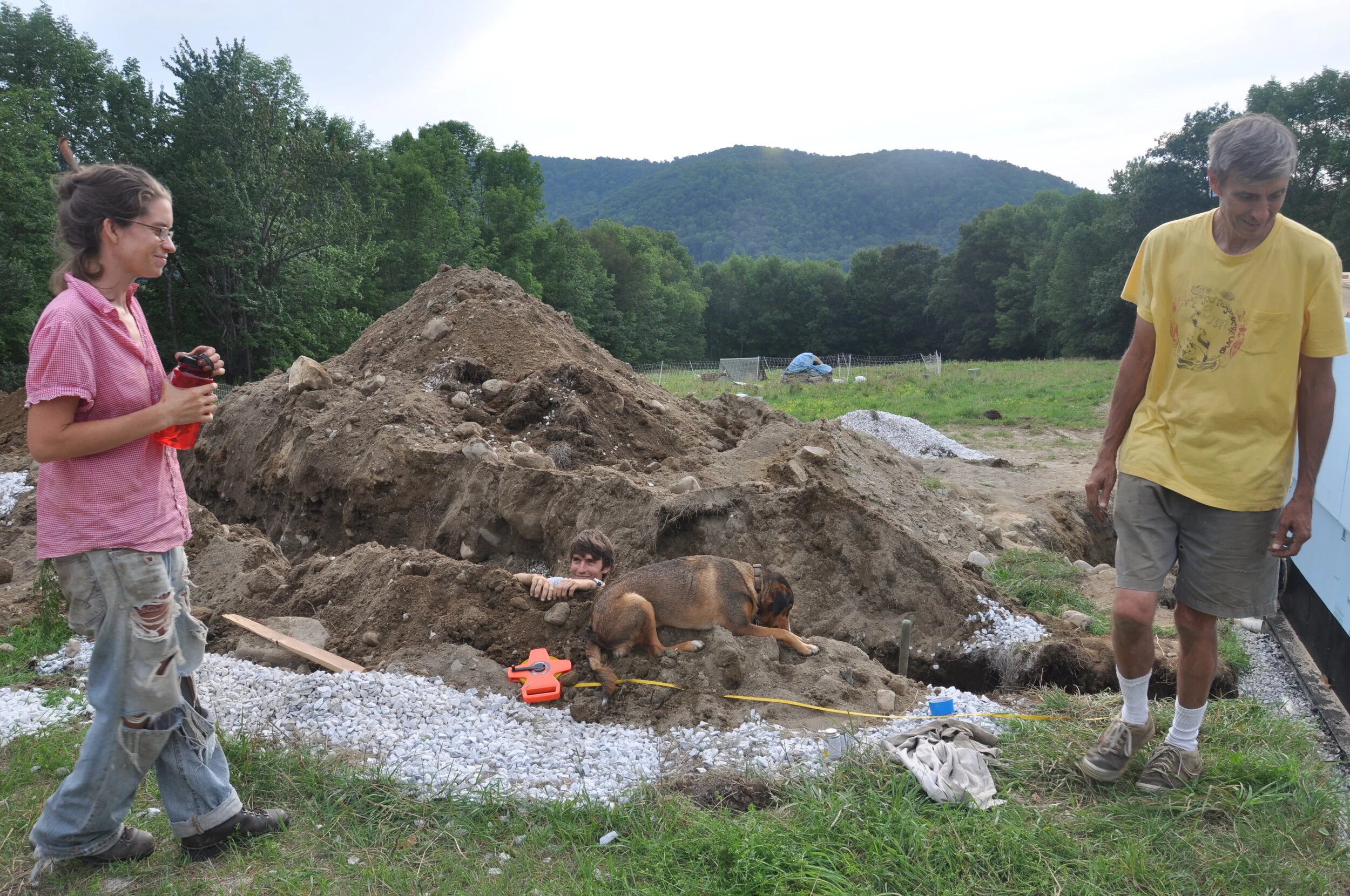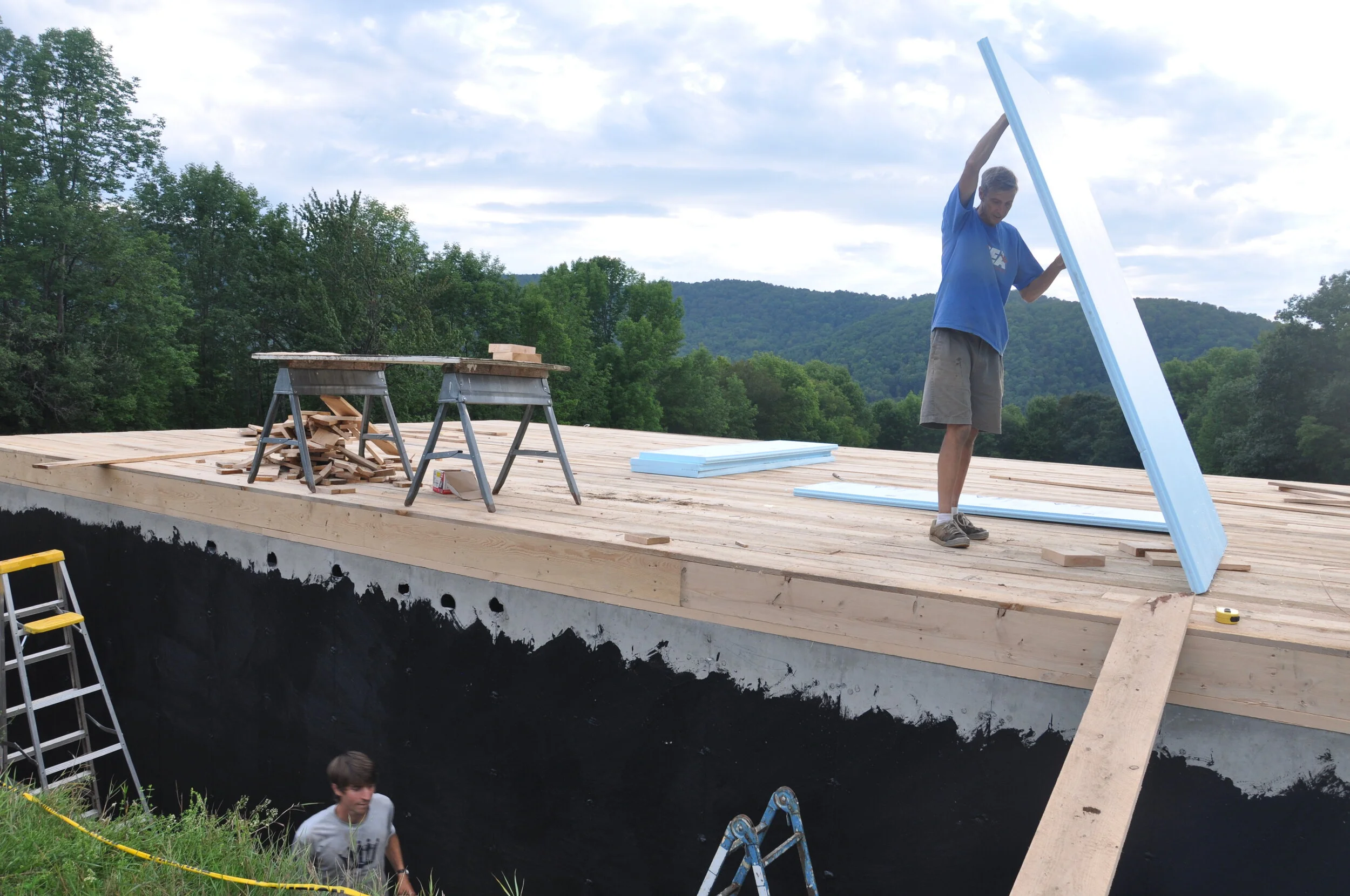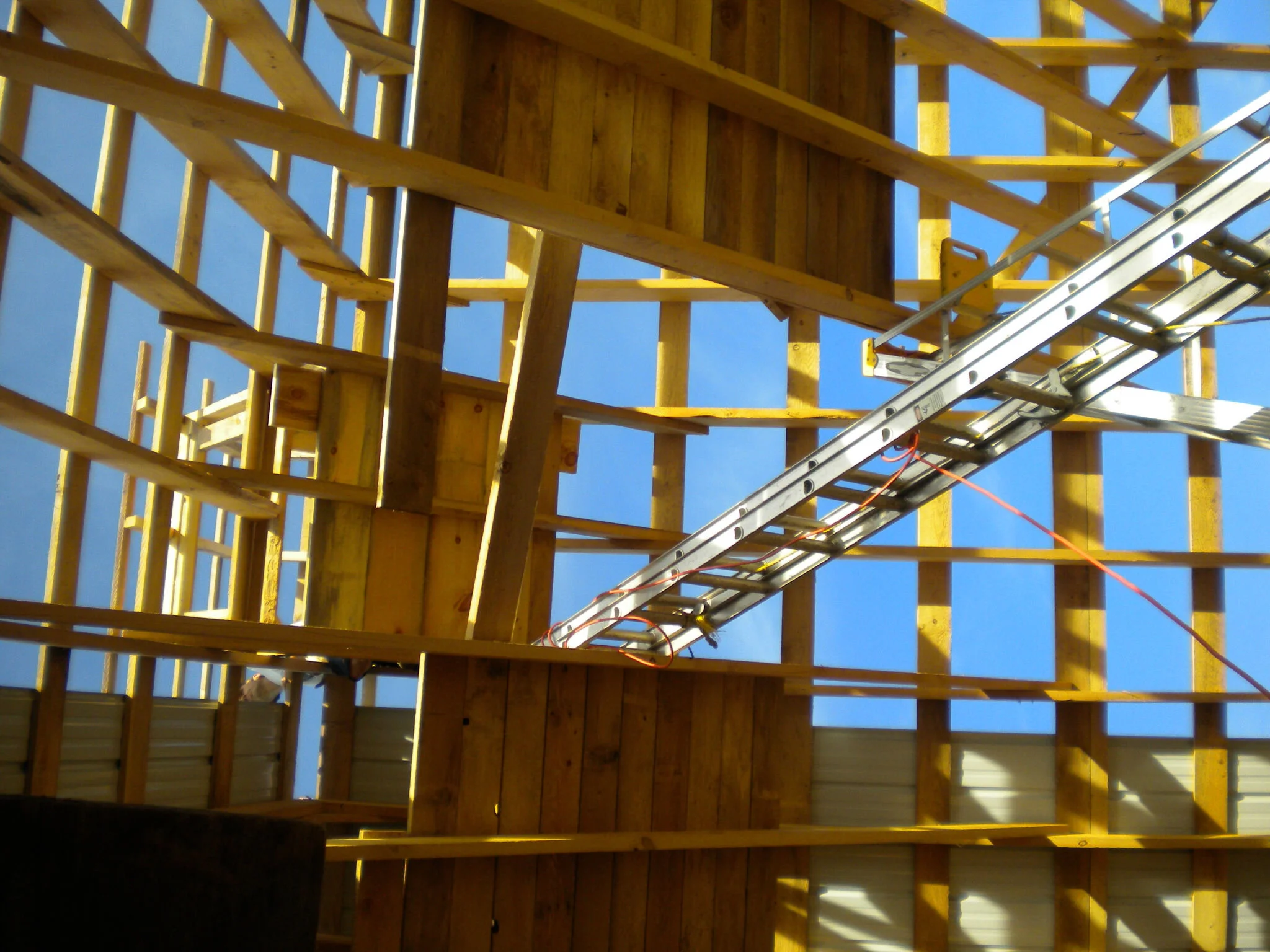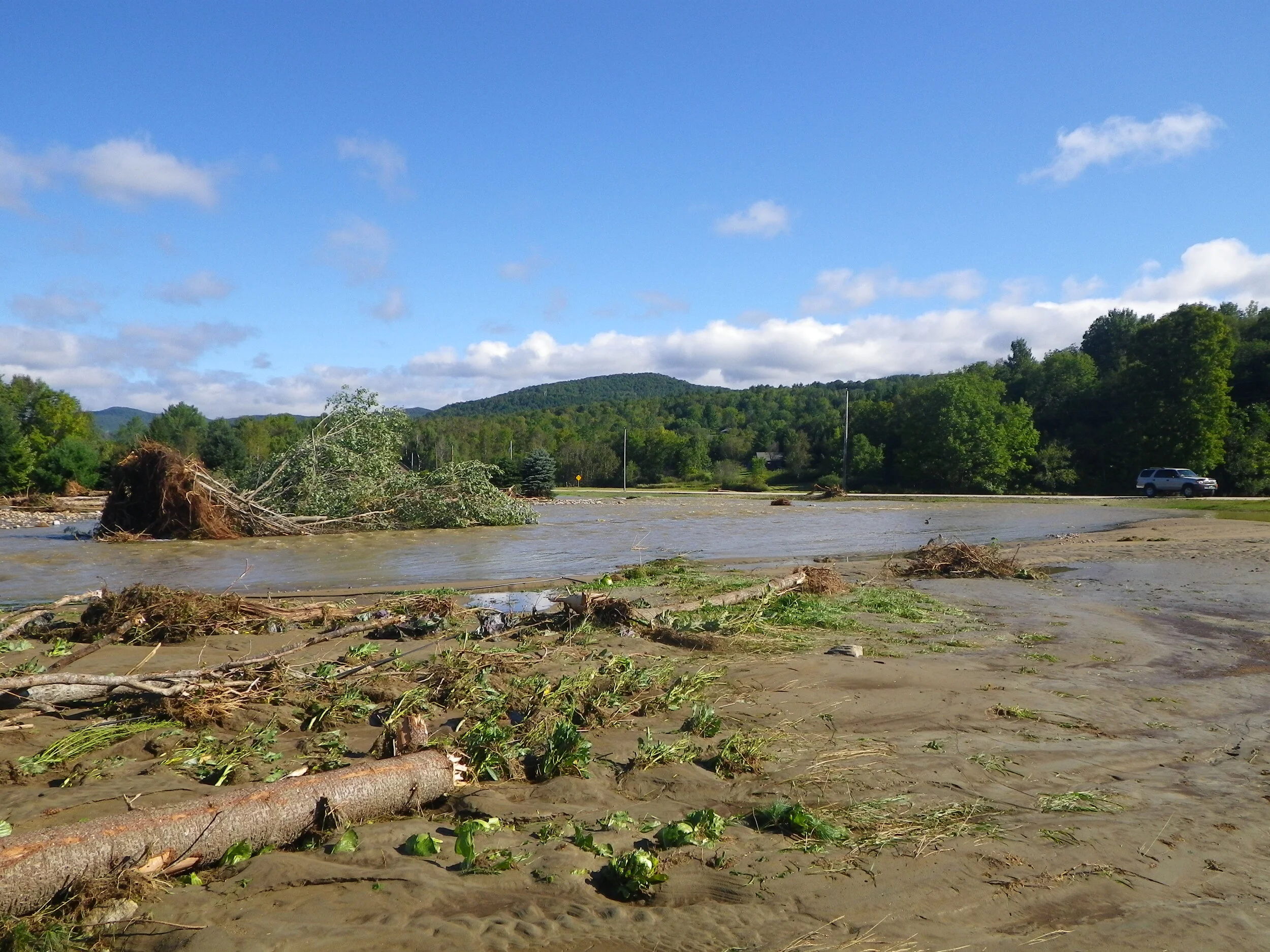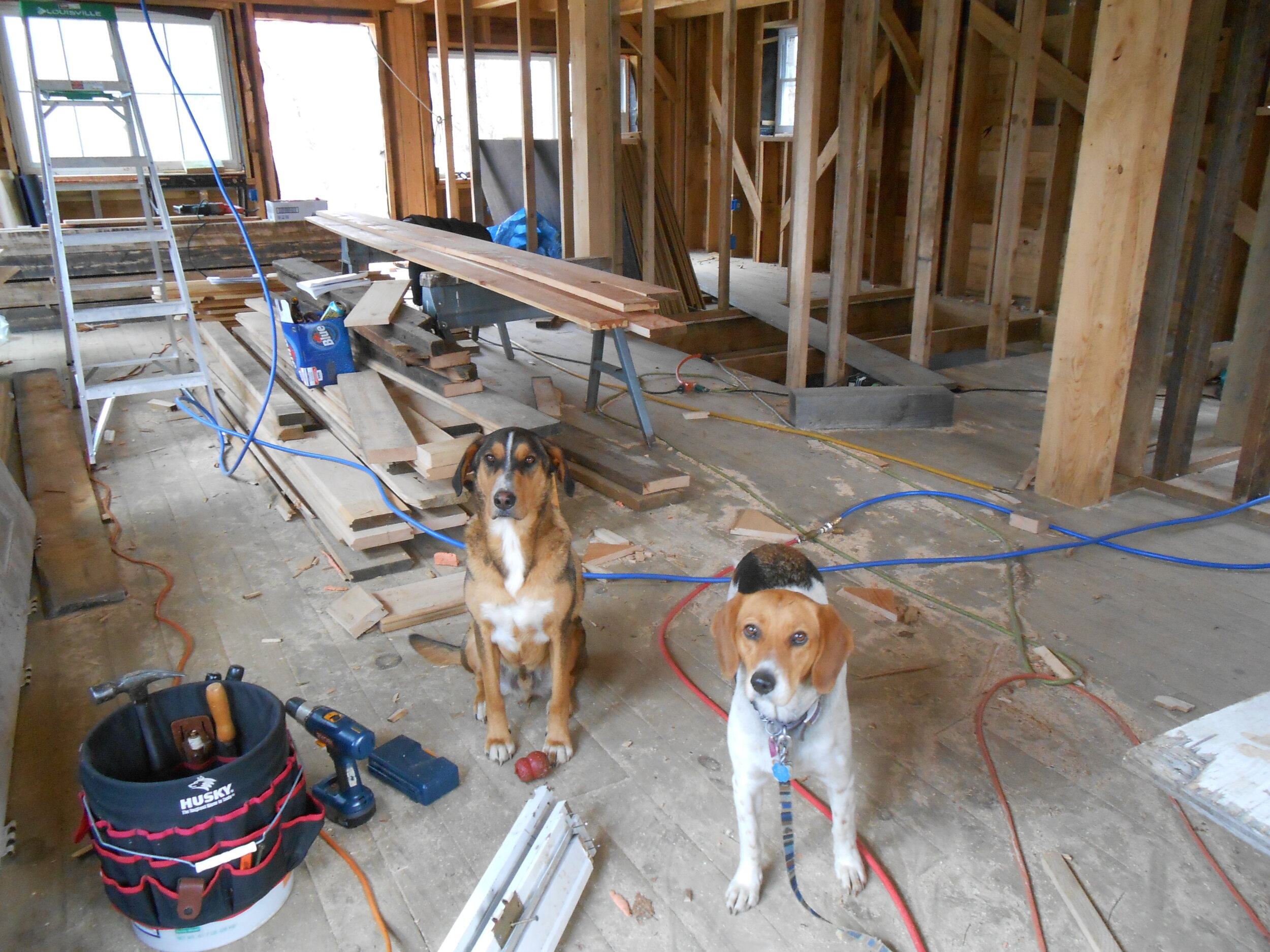14th Week of the Summer CSA: August 31 - September 3
Honey bee on a sunflower, photo by Adam Ford
This Week’s Availability
This week we will have spaghetti squash, purple kohlrabi, red beets, slicing cucumbers, pickling cucumbers, Ailsa Craig sweet onions, shallots, carrot bunches, summer squash, zucchini, garlic, green cabbage, red cabbage, red and yellow potatoes, jalapeno peppers, green curly kale, lacinato kale, mini romaine heads, pea shoots, arugula, basil, cilantro, parsley, heirloom tomatoes, beefsteak tomatoes, grape tomatoes, cherry tomatoes, and roma toamtoes!
We aim to have baby lettuce to harvest every week, but this coming week will not be available. Arugula, pea shoots, and baby romaine are all in really good shape this week for salad greens. Melons and peppers won’t be harvested this week, but should be ready again for next week.
pick your own flower garden up front, with rows of head lettuce transplants and lacinato and green curly kale behind, photo by Adam Ford
Grandma B picking treats in the kids garden with the kiddos, photo by Adam Ford
Math was one of my favorite subjects in school… and all I see when I look up close at plants is math, photo by Adam Ford
Bulk vegetables available for processing
When we have bulk amounts available with veggies, we like to pass along our wholesale prices to CSA members in case you want to do some processing. Now is the time! Below are the current wholesale prices for certain veggies. If you are interested in getting a bulk amount of anything, send us an email. Thanks!
Roma tomatoes: $28 for 10 pounds, $50 for 20 pounds
Cherry Tomatoes: $40 for 12 pints, $70 for 24 pints
Heirloom Tomatoes: $28 for 10 pounds, $50 for 20 pounds
Beefsteak Tomatoes: $28 for 10 pounds, $50 for 20 pounds
Basil: $12 per pound, $22 for 2 pounds, $30 for 3 pounds
Parsley: $20 for 10 bunches, $36 for 20 bunches
Onions: $20 for 10 pounds, $35 for 20 pounds
Green Curly Kale: $14 for 5 bunches, $24 for 10 bunches
Lacinato Kale: $14 for 5 bunches, $24 for 10 bunches
Garlic: $12 per pound
Zucchini: $15 for 10 pounds
Summer Squash: $15 for 10 pounds
Pickling cucumbers: $15 for 10 pounds
Slicing Cucumbers: $15 for 10 pounds
Jalapenos: $6 per pound, $25 for 5 pounds
Want to know what we do to preserve these items?
For the freezer: Tomato basil soup, chimichurri, chermoula, kale (chopped up, lightly sauteed with olive oil, to use in omelettes, stews, pastas in the winter), fake-a-mole, shredded zucchini and summer squash (for winter zucchini bread and zucchini pancakes), basil pesto, parsley pesto, and garlic scape pesto. (We use garlic scapes in place of garlic in all our pestos… much faster to process than peeling garlic! We also add parsley to our basil pesto, similar effect of speeding up the process) .
For the pantry: Tomato sauces, salsas, dried cherry tomatoes (covered in a blend of olive oil, salt, and basil for an extra amazing flavor!), pickles (slicing cucumbers actually work nicely like pickling cucumbers for lacto fermented recipes), fermented hot sauce (which we put in the fridge after it ferments.)
Fill out the delivery form by noon on Tuesdays.
Ryan harvesting tomatoes, photo by Adam Ford
watermelons ripening on the vine, photo by Adam Ford
Volunteering at the Farm!
The next couple of weeks we would have some good projects to have volunteers join us if you have ever wanted to interact more with the farm. We love bartering our volunteer helpers for veggies, so if you want to plug in for a couple hours and trade for some bulk veggies, send us an email, and we can share more details of the projects and connect about your availability.
If you haven’t swung by to enjoy the pick your own flower garden, there are still plenty of blooms to enjoy AND a sweet little circle of sunflower in the middle that is an exciting natural fort for little kiddos to play in (says our 3 and 4 year old), photo by Adam Ford
Farm News from Ryan and Kara
Saturday, August 28th marks 10 years since Tropical Storm Irene hit Vermont, causing so much destruction to so many homes, businesses, towns, and most tragically some loss of life. It re-routed the Mill River just north of the railroad trestle in East Wallingford and took our first farm with it. In the 10 years since then, with the help and generosity of more people than we could possibly list, we rebuilt Evening Song Farm on this land off Shunpike Road. If you are curious about that phase of the farm, the Irene portion of our start up story is about halfway down the page on our website here. (This week’s newsletter is peppered with old pictures below from that time.)
We had been dreaming about throwing an enourmous celebration for our community to offer our gratitude for where the farm is now a decade after that level of descrution. But with the stage of the pandemic we are currently navigating, it doesn’t feel like the right time. Hopefully we can celebrate together on another anniversary year.
Early spring transplanting in 2011 at the first farm. The hill behind the original land that Evening Song Farm grew on—Hateful Hill—is visible from our current location.
This photo, from a similar perspective, shows how thoroughly that land was scraped of its soil and piled with stones from the flooding.
We take a moment every year on August 28th to find stillness and reflect on that experience of our lives. The first couple of years after the storm were incredibly difficult, especially emotionally. It took a long time before I was able to actually look out the window at the back yard without crying. 10 years out, it’s no longer a gut wrenching day to think about that loss and the years of burnout that it took to rebuild.
This photo was taken late in the afternoon of Irene, shortly after the peak of the flooding. Our vegetable fields were where the river is in this photo.
For those of you who pick up your veggies at the farm, you know how lucky we are to farm in such a beautiful place. The views of the ridgeline on the other side of the highway, the surrounding forest, the towering trees that line the road up to the farm like a fairy tale, the quiet “Nice Road” we live on….. A very common sentiment that we share in conversation with others is how we would not have had the good fortune of being where we are without Irene. That first location was essential when we were new to the area, to have so many people drive by, see what we were doing, and feel some connection with us when they saw us at the farmers market or signed up for a CSA share. Now that we have become more established in this community, we don’t need that high level of visibilty that Route 103 offered. We’re grateful to be up this quiet dead end road, among the trees, with more growing space to produce food for more people, and employ a larger team of farmers.
And yet, 10 years later, the gratitude we feel for this farm now is complex and multi-dimensional. It’s mixed with the memory of ourselves on August 29th 2011, driving back to that land and feeling kicked hard in the stomach at the sight of those precious fields of crops made unrecognizable by the most jarring natural transformation of land we had ever personally witnessed. It includes memories of the impossibility of our farm’s recovery…the feeling of being a hollow shell of ourselves every autumn, overworked from simultaneously building and running a farm, the end of the chaos both vaguely in sight but unreachable. It includes memories of the painful uncertainty of our partnership’s ability to heal from that loss and weather the ongoing stress, which sometimes felt like might never end. It includes the experiences of the beautiful generosity of so many people, who over years and in countless ways expressed their care and desire for us to continue to grow food for this commuinity. Shortly after Irene, neighbors, family, and friends came by to our farm to help in any possible way—pulling broken irrigation lines from the sand, digging out old equipment, shoveling mud out of the barn, clipping the garlic that was safely drying in the barn, singing to us, taking out the trash, feeding us, hugging us, burning through chainsaw chains cutting up downed sand-covered trees, offering land, taking us on walks. Our gratitude is woven with all the joyful memories of the past decade: sunny days spent in the abundance of beautiful crops, laughing with our farm crew, watching our kids learn to open irrigation valves, harvest cucumbers with the crew, and run up and down the towering rows of tomato plants playing tag.
I wish the young adults we were—naive and full of energy—didn’t have to go through the exhausting marathon of losing and re-building a new farm. But we’re grateful to be where we are now, so close to our original location, helped to get here by more people in this community and beyond than we could possibly list. It’s a complex gratitude, and this unique season of this place in the world—the hints of autumn air blown in through cool dry breezes, the taste of earliest wild apples—I feel that complexity most vibrantly.
we walked tried walking hopme that day after the rain slowed to see how bad the flooding was and saw veggies in the road… we turned back that day because it was all still too overwhelming
view from the wash station as flood waters receded
A small section of our field closer to the road was not eroded, but buried in sand.
Checking out the fields that were generously offered to us by Lily and Eldred French to use that first season after the flood….. We are both standing where the parking area is now, the barn will be to our left, the house will be farther off the frame to the right ahead in the field. I’m squatting because the fatigue I was battling for two years of Lyme disease at the time made standing especially draining.
Kara, Ryan, Ryan’s dad, (and Echo) laying power and water lines for the propagation house on the new property, photo by Orion Queer
Ryan and Ryan’s dad setting insulation around the barn foundation for the root cellar, photo by Orion Queer
Another thing people often ask is in what ways we grew from experiencing Irene. Growing is a lifelong experience, and post-Irene was certainly an accelarated time of growth. We have been learning about humility, vulnerability, and resiliency in a deep body way versus just a buzzword kinda way. We learned to accept help and even ask for it. We learned that we are capable of doing hard things, and we got a little better at not sweatting the smaller stuff. (Punctured tractor tire? That’s ok, we rebuilt a farm after a hurricane.) We got introduced to the idea that we have limits, and that it’s wise to heed them. We learned how humans are tremendously beautiful and compassionate and can be good at caring for each other. We added to our climate resliency tool box from personally experiencing climate trauma. And I think the loudest thing I learned from that experience is that everyone is carrying something hard at some point in life, and to always, always approach people with grace and gentleness. For the first year after Irene, it felt nearly impossible to do some very mundane, basic things, like buying groceries. (It was a marvel to me that people could buy vegetables without crumbling into an incapable heap on the floor.) I would have to hold back my tears at farming conferences when fellow farmers would fret over pest issues. (I would think: I wish I had a farm to have pests to stress about… Give me flee beetles!) But in moving through all of that, it’s clear that we are all holding something tender, and to just always offer compassion.
building the barn… want to orient yourself? Ryan is staring at where the tomatoes are displayed now, looking at the space where the display cooler is now.
looking up at the barn roof
We are grateful to be farming away from the river. We have learned to appreciate the challenge of hillside growing, and we are just lucky to even be farming at all anymore. When we returned home to the farm that Monday morning 10 years ago, we felt pretty clear that we were done being farmers, that it was time to shift into new jobs, grow a little garden behind our house, and move on. But little by little, neighbors and strangers would stop by asking how to help, wondering what the next steps were, planning a big community fundraiser… so in the aftermath, it felt like the only choice was to keep farming, buoyed by the support of community. We imagine there will be a time in the future, after this pandemic, to try to celebrate all the community has done for us to be a farm after a hurricane, and until then, we can just keep practicing compassion and resiliency during a pandemic that is affecting all of us in uncomfortable ways. What we had started building before Irene, and grew rapidly afterwards with everyone’s generosity, was invisible layers of community support. That invisible community foundation is what we need more than ever in our world, and we hope that this farm can continuing being a part of that for years to come.
Have a great week.
-Kara, Ryan, and the ESF team
First farm, 2011, before and after Irene, photos merged by Andrew Nelson
We’re so lucky to get to work with this piece of land to grow food for our community. Photo by Adam Ford
The last picture we snapped as we drove away.
Returning the next day we found the greenhouse completely leveled.
Everything in this frame used to be veggie gardens. That beautiful maple tree on it’s side used to be about a football field upstream, and my favorite place to sit in the shade.
This photo shows the two branches of the river, it’s previous course running to the left, around the trees. The current path of the river to the right goes right through where we grew veggies, and was also where the maple tree in the previous picture used to stand.
Our community came together to throw a big support-raiser party for us on September 26, 2011.
This was the first year of our new propagation house in 2013! For many weeks while it was in use we didn’t have a water source at this location, so we hauled many bins, once or twice a day from the old farm to the new farm to water plants (2013)
we did SO MUCH cleanup after the storm, but here is Ryan sitting in the new river in 2021 with greenhouse plastic, irrigation lines, and caterpillar tunnel hoops still sticking out of the bank
building a house as simply, rectangularly, and quickly as possible (2013)
we grew veggies here 10 years ago… now remnants of that operation just poke out of the side of the bank (2021)
standing in the new river in 2021, where we grew garlic in 2011
“I’m wondering when all these power tools will be done” ask Echo and Callie, hoping their house will quiet down soon
This is the tunnel field, the flower garden is where the two scrap lumber piles in the foreground of this picture are (2013)
picture from the same spot in the cupola of the barn, but in 2021, the flower garden is where those lumber scraps were, and now there are 3 high tunnels
A final sentiment to share in this newsletter is our sadness at the passing away of Jon Satz, owner of Woods Market Garden. We knew Jon as an incredibly talented and innovative farmer, who shared his equipment and expertise generously with us and others. His stewardship of his farm helped inspire us to become better caretakers of the land under our management. We will miss his kind and thoughtful presence in our vegetable farming community.















